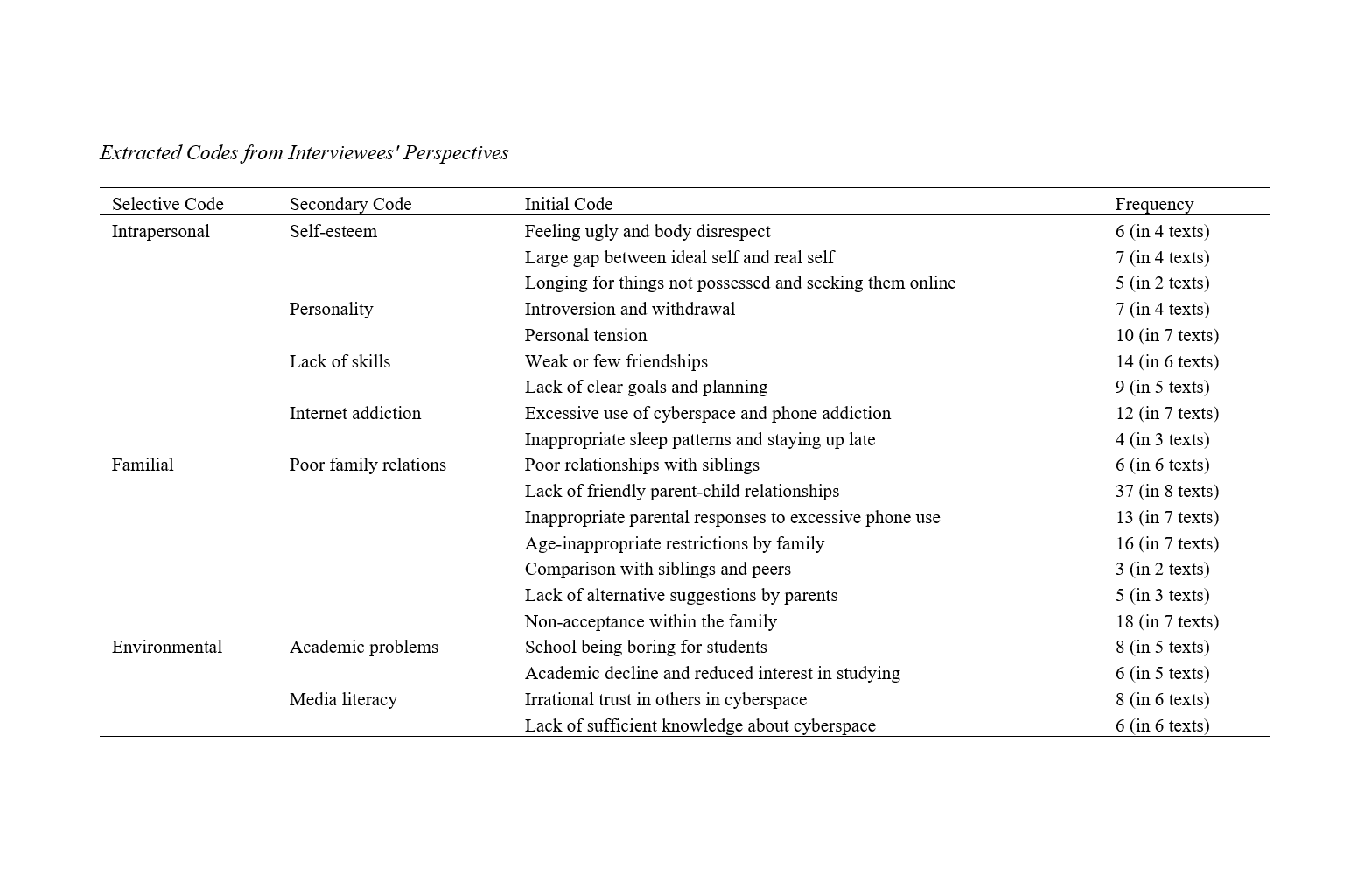A Qualitative Study on Factors Leading to Victimization in Cyberspace Among Adolescent Girls in Isfahan
Keywords:
Cyberspace victimization, Cyberspace, Adolescent girls, Qualitative approachAbstract
Objective: The objective of this study was to identify the factors contributing to cyber victimization among adolescent girls and to design and validate a questionnaire based on these factors.
Methods and Materials: This research utilized a qualitative approach, employing thematic analysis to identify the factors contributing to cyber victimization. The study sample consisted of adolescent girls in high school in Isfahan, Iran, who had experienced cyber victimization. Data were collected through semi-structured interviews with eight participants, selected via purposive sampling until data saturation was achieved. The interviews were transcribed and analyzed using MAXQDA software.
Findings: The findings revealed three main categories of factors contributing to cyber victimization: intrapersonal, familial, and environmental. Intrapersonal factors included self-esteem issues, personality traits, lack of social skills, and internet addiction. Familial factors encompassed poor family relations and inappropriate parental responses. Environmental factors involved academic problems and lack of media literacy. The most frequently reported issue was the lack of friendly relationships between parents and children, while the least frequent factor was comparison with siblings and peers.
Conclusion: The study underscores the multifaceted nature of cyber victimization among adolescent girls, highlighting the significant roles of intrapersonal, familial, and environmental factors. Effective prevention and intervention strategies should address these factors concurrently. Enhancing self-esteem, social skills, media literacy, and fostering supportive family and school environments are crucial. Further research is needed to validate these findings in diverse populations and explore cultural influences on cyber victimization. Through comprehensive and collaborative efforts, the detrimental effects of cyber victimization on adolescents can be effectively mitigated.
Downloads

Downloads
Additional Files
Published
Issue
Section
License

This work is licensed under a Creative Commons Attribution-NonCommercial 4.0 International License.








